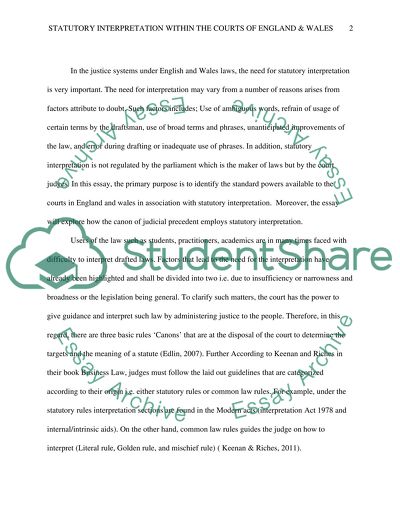Cite this document
(“Statutory Interpretation Within The Courts Of England & Wales Essay - 1”, n.d.)
Retrieved from https://studentshare.org/law/1620181-statutory-interpretation-within-the-courts-of-england-wales
Retrieved from https://studentshare.org/law/1620181-statutory-interpretation-within-the-courts-of-england-wales
(Statutory Interpretation Within The Courts Of England & Wales Essay - 1)
https://studentshare.org/law/1620181-statutory-interpretation-within-the-courts-of-england-wales.
https://studentshare.org/law/1620181-statutory-interpretation-within-the-courts-of-england-wales.
“Statutory Interpretation Within The Courts Of England & Wales Essay - 1”, n.d. https://studentshare.org/law/1620181-statutory-interpretation-within-the-courts-of-england-wales.


